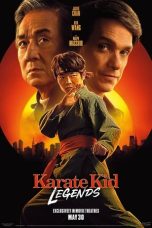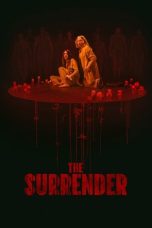Blue Is the Warmest Color (2013) Movie Review – A Profound Exploration of Love and Identity
Blue Is the Warmest Color (French: La Vie d’Adèle), directed by Abdellatif Kechiche, is a French coming-of-age romantic drama that took the world by storm upon its release in 2013. Based on the graphic novel by Julie Maroh, the film tells the deeply emotional and complex story of love, identity, and self-discovery. This review will explore the film’s plot, themes, direction, performances, and its availability for streaming, particularly in the United States.
Plot Overview
Blue Is the Warmest Color centers around Adèle (Adèle Exarchopoulos), a French teenager navigating the challenges of adolescence, including her burgeoning sense of self and sexuality. Adèle’s life changes irrevocably when she encounters Emma (Léa Seydoux), a confident and assertive art student with striking blue hair.
The film chronicles their intense romantic relationship, beginning with their first meeting and evolving through the highs and lows of love, passion, and heartbreak. Adèle’s journey is one of self-discovery as she grapples with her desires, societal expectations, and her understanding of love and identity.
The narrative unfolds over several years, depicting the evolution of Adèle and Emma’s relationship with a raw and unfiltered approach. The film delves into the complexities of love, the pain of loss, and the search for personal fulfillment.
Themes and Emotional Impact
Blue Is the Warmest Color is rich with themes that resonate deeply with viewers:
- Love and Desire: The film is a profound exploration of love and desire, capturing the intensity and passion of Adèle and Emma’s relationship. It portrays love as a force that is both beautiful and painful, capable of bringing immense joy and deep sorrow.
- Identity and Self-Discovery: At its core, the film is a coming-of-age story that focuses on Adèle’s journey of self-discovery. Her relationship with Emma plays a crucial role in shaping her understanding of herself, her sexuality, and her place in the world.
- Societal Expectations and Acceptance: The film also touches on societal expectations and the challenges of acceptance, particularly regarding LGBTQ+ relationships. Adèle’s struggle with societal norms and her own identity is a central theme that adds depth to the narrative.
- Art and Expression: Emma’s world of art introduces Adèle to new forms of expression and creativity. The film explores how art can be a medium for understanding and expressing one’s innermost feelings and desires.
The emotional impact of Blue Is the Warmest Color is profound, with a narrative that is both intimate and universal. The film’s portrayal of love, identity, and personal growth resonates with viewers, making it a powerful and unforgettable cinematic experience.
Direction and Cinematic Style
Abdellatif Kechiche’s direction is marked by its naturalistic and immersive approach. Kechiche captures the raw emotions and nuances of Adèle and Emma’s relationship with an unflinching eye, allowing the story to unfold in a way that feels both authentic and deeply personal.
The film’s cinematography, by Sofian El Fani, enhances its intimate atmosphere. Close-up shots and long takes are used extensively, creating a sense of immediacy and drawing viewers into the characters’ emotional world. The use of natural lighting and handheld cameras adds to the film’s realistic and immersive style.
The film’s pacing, while deliberate, allows for a deep exploration of the characters and their relationship. Kechiche’s choice to focus on the small, everyday moments of life adds a layer of realism that makes the film’s emotional beats even more impactful.
Performances
Adèle Exarchopoulos and Léa Seydoux deliver extraordinary performances that are central to the film’s success.
- Adèle Exarchopoulos: As the film’s protagonist, Exarchopoulos gives a raw and emotionally charged performance that captures the complexities of Adèle’s journey. Her portrayal is deeply affecting, conveying the character’s vulnerability, passion, and growth.
- Léa Seydoux: Seydoux’s performance as Emma is equally compelling, bringing strength, confidence, and depth to the character. Seydoux and Exarchopoulos share a powerful on-screen chemistry that drives the film’s emotional core.
The performances are a key reason why the film resonates so deeply with audiences, making Adèle and Emma’s story both relatable and heart-wrenching.
Critical Reception and Legacy
Blue Is the Warmest Color was met with widespread critical acclaim upon its release. It won the prestigious Palme d’Or at the 2013 Cannes Film Festival, with the award being shared by the director and the two lead actresses—a first in the festival’s history.
The film was praised for its bold and honest portrayal of love and sexuality, as well as for the outstanding performances of Exarchopoulos and Seydoux. However, it also sparked controversy regarding the depiction of lesbian relationships and the conditions under which certain scenes were filmed.
Despite the controversies, Blue Is the Warmest Color remains a significant and influential film, particularly in its representation of LGBTQ+ themes in mainstream cinema. Its legacy is marked by its contribution to the ongoing conversation about love, identity, and the complexities of human relationships.
Where to Watch Blue Is the Warmest Color (2013) Online
For those interested in watching Blue Is the Warmest Color, the film is available on several streaming platforms and rental services, particularly in the United States:
- Amazon Prime Video: Blue Is the Warmest Color can be rented or purchased on Amazon Prime Video, with rental prices typically starting at $3.99 and purchase options available for around $14.99.
- Apple TV: The film is available for rent or purchase on Apple TV, offering high-definition streaming for viewers.
- Google Play Movies & TV: Blue Is the Warmest Color can be rented or purchased on Google Play Movies & TV, providing flexibility for viewers on various devices.
- YouTube Movies: The film is accessible on YouTube Movies for rent or purchase, offering an easy streaming option.
- Hulu: The film may also be available on Hulu, depending on regional licensing agreements, making it accessible for subscribers.
Final Verdict
Blue Is the Warmest Color is a deeply moving and provocative exploration of love, identity, and self-discovery. Directed by Abdellatif Kechiche, the film combines powerful performances, a naturalistic style, and a compelling narrative to create an unforgettable cinematic experience.
Available on multiple streaming platforms, the film is accessible for those interested in exploring its emotional and thematic depth. Whether revisiting this impactful drama or discovering it for the first time, Blue Is the Warmest Color offers a profound and immersive experience that lingers long after the credits roll.

















